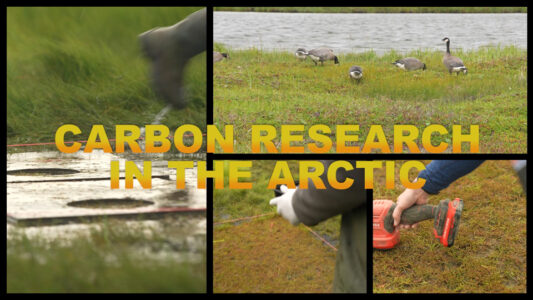
Laura Nielsen for Frontier Scientists
Balloons are far from the first things that come to mind when you hear scientific discovery, but measurements taken by a fleet of eight-story-tall balloons released earlier this year are helping scientists make new discoveries about our planet.
The 20 balloons lofted into the pristine cold air above Antarctica this year represent half of the National Aeronautics and Space Administration project BARREL: Balloon Array for Radiation belt Relativistic Electron Losses. Another 20 balloons scheduled to be released in early 2014 will complete the data set. The project is part of NASA’s ‘Living With a Star’ program designed to help us understand how the Sun and Earth interact, and how the environment their interaction produces can influence human technology.

The Earth is surrounded by giant radiation fields discovered in 1958 by James Van Allen and named the Van Allen Belts. Charged particles released by solar activity like solar storms stream through space, and some encounter the near-earth area above our planet known as Geospace. The interactions which take place there are called Space Weather. Atoms or molecules become ions as they gain or lose electrons. Relativistic electrons (super fast-moving electrons) interact with the Earth’s magnetosphere and flow within the Van Allen Belts, approaching the Earth’s upper atmosphere or escaping the fields back into space.
When electrons interact with the atmosphere, they cause the beautiful Aurora. However, Space Weather can also interfere with delicate instruments aboard satellites which we rely on for technologies like Global Positioning Systems (GPS). Solar storms, and the processes within the Van Allen Belts, can impact human technology and pose a danger to space travel. We want to understand them well enough to forecast the radiation activity in Geospace.
The strength and size of the Van Allen radiation belts fluctuate, influenced especially by solar activity like solar flares and solar storms which release higher levels of energy and material into space. The instruments aboard the balloons of the BARREL project aim to answer the questions of where electrons that later escape from the Van Allen Belts go. How many of them approach through the Earth’s atmosphere? How far do they get? What effects do they apply? How do they behave differently when provoked by a geomagnetic storm? To collect data, the balloons fly at an altitude of 30-35 km and carry delicate instruments. One is an NaI scintillator used to measure X-rays. Precipitating (falling) relativistic electrons produce X-rays when they collide with particles in Earth’s atmosphere. Another instrument onboard the balloons’ payloads is a DC magnetometer, which analyzes magnetic fields.

Meanwhile, twin NASA spacecraft called the Van Allen Probes circle the Earth taking readings from within the Van Allen Belt. The probes “…map out this region with exquisite detail, cataloguing a wide range of energies and particles, and tracking the zoo of magnetic waves that pulse through the area, sometimes kicking particles up to such frenzied speeds that they escape the belts altogether.”* Readings from the Van Allen Probes and from the BARREL balloons are combined to form a more complete understanding of what happens to particles and electrons flying through space and entering the Earth’s atmosphere.
The data gained by BARREL’s balloons, as well as information from the Van Allen Probes, together paint a picture of processes within the Sun-Earth Geospace. Informed models run on supercomputers will help scientists better predict future space weather events.
This NASA-funded study is led by physicist Robyn Millan of Dartmouth College and supported by the National Science Foundation’s Antarctic Program, as well as the National Environmental Research Council in the United Kingdom and the South African National Space Agency.
.
Frontier Scientists: presenting scientific discovery in the Arctic and beyond
References:
‘Balloon Array for Radiation Belt Relativistic Electron Losses’ Dartmouth College http://www.dartmouth.edu/~barrel/
‘BARREL Mission Statement’ NASA http://www.nasa.gov/mission_pages/rbsp/barrel/index.html
‘Twenty NASA Balloons Studying the Radiation Belts’ NASA http://www.nasa.gov/mission_pages/rbsp/barrel/20-balloons.html
‘NASA’s BARREL Mission Launches 20 Balloons’ NASA http://www.nasa.gov/mission_pages/rbsp/barrel/20balloons.html
*‘NASA’s Van Allen Probes Discover a Surprise Circling Earth’ NASA http://www.nasa.gov/mission_pages/rbsp/news/third-belt.html














